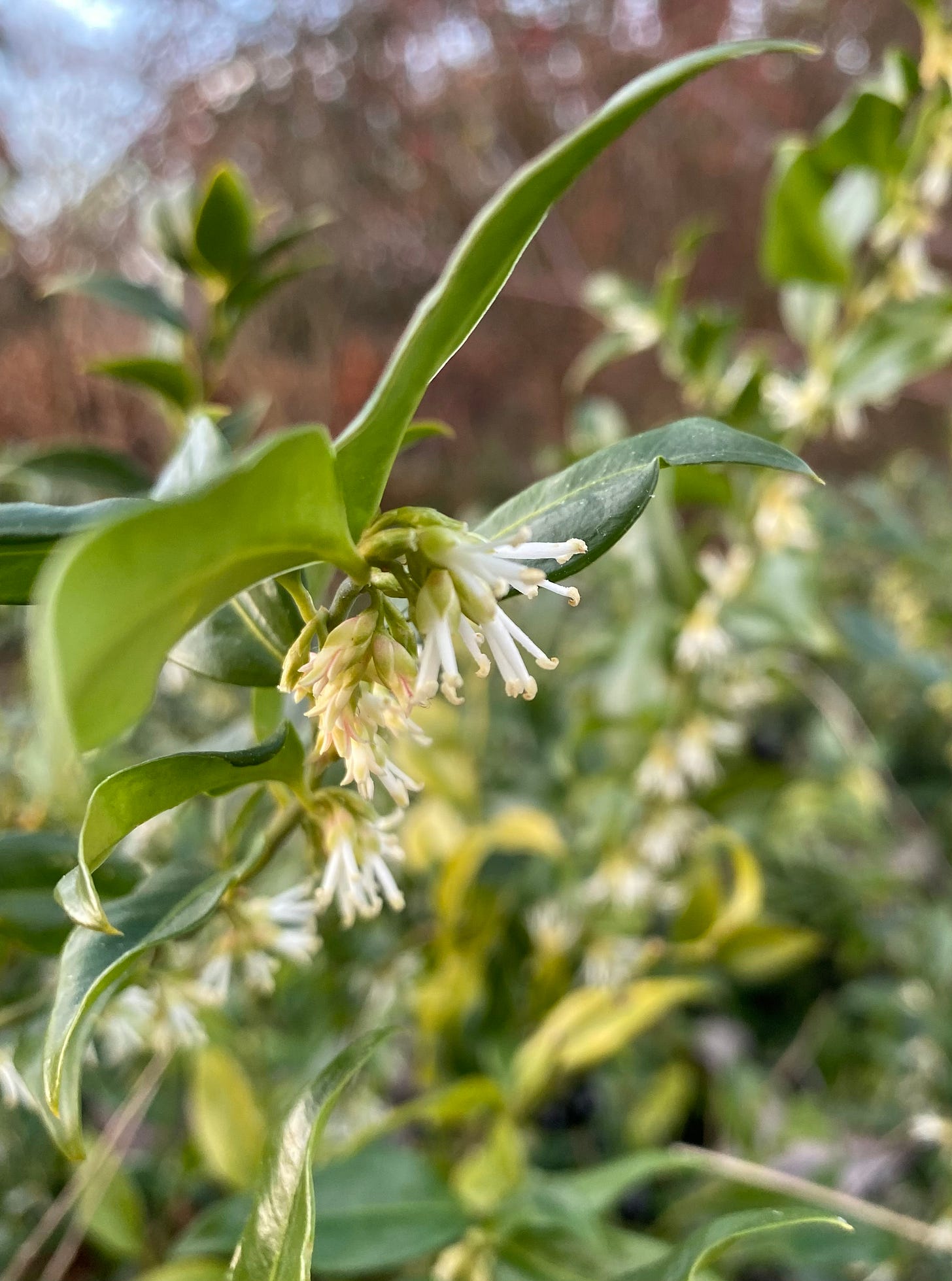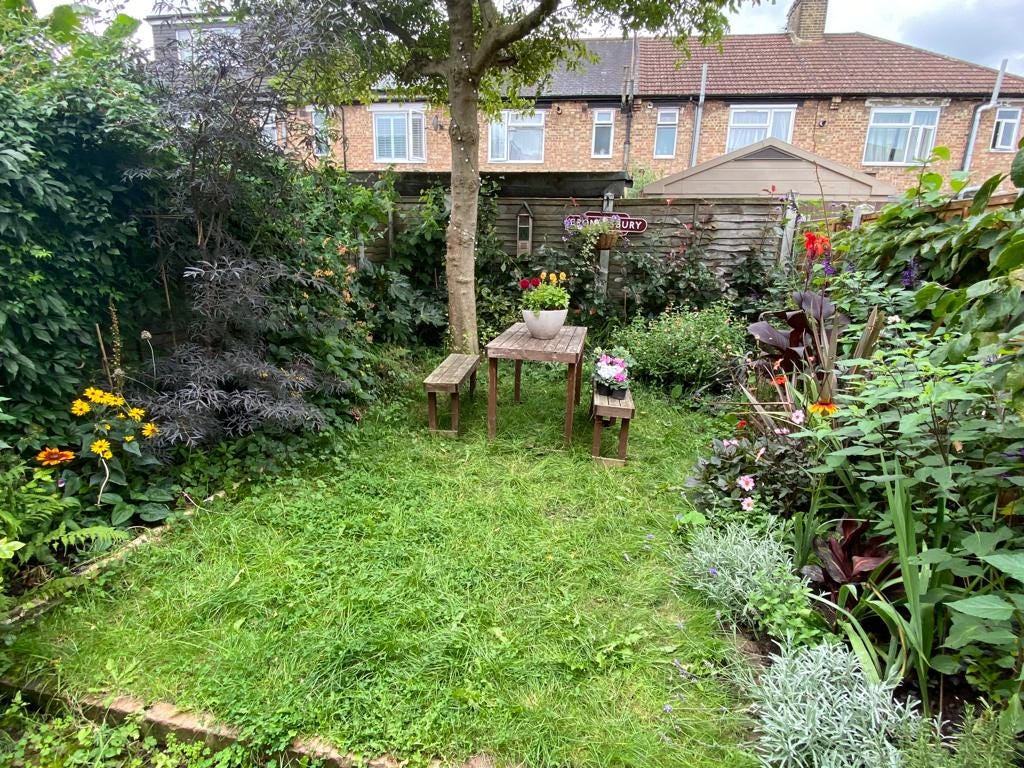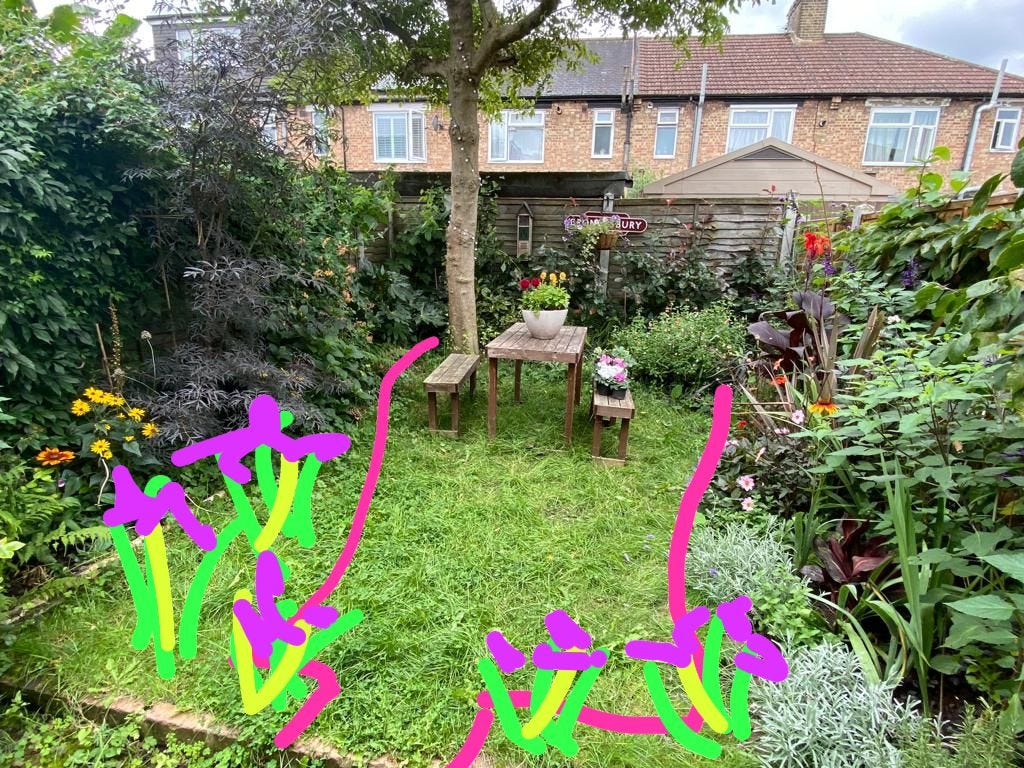Waiting out winter, making plans
Spring is just around the corner. But for now, there's plotting to be done
You’re reading The Earthworm, an alternative gardening newsletter that takes a sideways look at the world of gardens, gardening, horticulture and all that good green stuff. If this is your first time here, you can catch up on anything you’ve missed by following this link. Subscribe now for free and join the community or, if you can afford to do so, support my work by upgrading to a paid subscription at any time. Thanks, and enjoy today’s post.
The first signs of Spring are here. Green shoots emerge in clumps from the half-frozen soil like tiny skyscrapers, forming miniature botanical business districts. The daffodil stems are topped with plump papery flowerheads, inviting us to unwrap them like the final layer in a game of pass-the-parcel, in which the prize is a glowing golden trumpet.
But don’t be fooled: it is still winter. If the temperature doesn’t give it away, the flowers do. On my commute to work (more on which later), my head is turned by the sweet fragrance of front garden Sarcococca, aka winter box. The leafless green vines covered in bright yellow flowers, tumbling over the tops of high brick walls, are those of Jasminum nudiflorum, or winter jasmine. And the shy, nodding flowerheads in sumptuous shades of purple, pink and lime-dipped white are those of Helleborus – that’s right, winter (or sometimes Christmas) rose.
Here in some of the cooler (not to say truly cold) parts of the northern hemisphere, it is absolutely still winter. We have spent weeks, maybe months now, cooped up indoors, staring wistfully out of our windows at our weather-beaten, frost-battered gardens. Gardeners are not easily restrained from their plots, but though the list of “jobs for the weekend” will soon grow – eventually swelling to an overwhelming and seemingly insurmountable size – that list is, for now, bare. Much like our flower beds.
I recently wrote a piece for Gardens Illustrated laying out the reasons why we absolutely must wait before launching ourselves trowel-first into active gardening. Is it a fun read? Yes (I hope)! Is it informative? Sort of! Should you read it? Why not?!
One thing that gardeners can and should do during these long dark winter months is plan. And shop! But mainly plan.
I’ve got big plans for my small garden. For a couple of years now I’ve been meaning to make some changes to the size and shape of my beds, to increase the available area for fruit bushes (delicious) and flowers (beautiful), and reduce the size of our admittedly already very modest lawn (a pain to maintain and of little value to the garden’s domestic and wild visitors both). But it’s never felt like the right time. Once things get growing in earnest, my mind turns to maintenance, and any notion of a mini-makeover is made to wait until winter.
Which is why now is the time to plan, and soon – but not quite yet – it will be the time for action.
My hope is to beef up the lefthand border, especially the section closest to the house, which gets a decent amount of afternoon sun. I may also plant up the part that traces the border with the patio, leaving a doorframe-width entry point to access the centre of the garden, now enveloped on all sides with growth and life and colour and scent. I might even get rid of the lawn entirely and replace it with some sort of sustainably sourced gravel. (Though I am yet to submit these plans to the house’s highly influential and lawn-appreciating Planning Committee, sometimes referred to more concisely as “Ruth”.)
But writing the above paragraph, just thinking about what that little space out there could become, has got me geed up. I can’t wait to get out there! But I will wait. I have to wait.
And while I wait, I shop. The garden depends on it. Nay, the economy depends on it! Yes, we’re in the midst of a cost of living crisis; yes, many of us are dialling down our thermostats and walking around the house looking like Joey that time he clad himself in every item in Chandler’s wardrobe…
Nonetheless, the part of my plan that I’m most excited about is the opportunity to introduce some new plants. And new plants – given my lack of greenhouse or nursery beds or even windowsill space – means spending. And when those hard-earned £££s (more on which below) depart my bank account, you will be the first to know what they have been spent on, and why.
For now though, my focus is on seed. Specifically, vegetable seed. Extra specifically, heritage (also referred to as heirloom) vegetable seed. Why this level of specificity? Tune in to the next instalment of The Earthworm, and all will be revealed.
Oh yeah, so I started a new job. I’m three weeks in and am pleased to report that, so far, so good.
It’s at the RHS, or Royal Horticultural Society, to give it its full and proper and exceedingly posh title. Yes, I know. The Earthworm, the slinking, soil-dwelling, somewhat subversive outsider of the horticultural media, has gone mainstream.
If you garden in Britain, it is impossible to escape the influence of the RHS, a charity which exists to promote horticulture in all its forms, be that hobby, passing interest, climate- and biodiversity-crisis mitigating research, or industry.
The RHS also puts on a number of flower shows and plant festivals every year, and it is the creation and production of the guides for these shows – you know, the programmes that help you navigate the showgrounds and more deeply understand what you’re looking at – that is now absorbing my 9-5.
It feels a little surreal to be (a tiny) part of the horticultural establishment, but don’t worry, branded lanyard or no, The Earthworm won’t be tamed; rather, it is the RHS show guides that will receive The Earthworm treatment. And pleasingly, my lovely new colleagues appear to have embraced that.
I can assure you that my new role will not stifle, silence or censor my voice here on Substack. A year ago next week, The Earthworm was conceived as an alternative voice within the gardening media, and an alternative voice within the gardening media it shall remain.










Hey Dan....keep trying, even a small reduction. I have too much lawn (live in Australia, biggish yard). Plan is to extend existing beds outwards to increase garden beds and only have lawn "corridors" - particularly keen to increase the native garden beds I have and some perennial areas. Going to try the lasagna lawn conversion - hessian. card board, mulch/compost, leave 6 months, then plant. But have do it incrementally so as not overwhelmed.
Congratulations on the new job Dan! Sounds like a perfect fit. I’m looking forward to seeing how your garden develops this year as well.